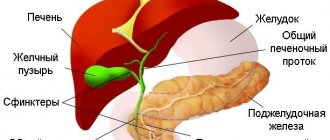Causes of constipation in children
Constipation can occur at any age. Newborns have an imperfect digestive system, which leads to various problems. From 2 years of age, problems occur less frequently due to the completion of the formation of the gastrointestinal tract. During this period, the stomach fully adapts to environmental factors and copes better with digestive processes.
Disruption of natural defecation processes mainly occurs in the summer. Active children lose moisture through sweat, which leads to hardening of the stool. This is why it is important to drink a lot in hot weather.
Dairy products
Fermented milk products, such as bifidok, yogurt, kefir, fermented baked milk, are effective helpers in the fight against constipation. Therefore, they are recommended for children for daily use. However, it should be remembered that it is undesirable to abuse fermented milk products, since it can provoke metabolic disorders and unnecessarily “load” the stomach and kidneys. If we talk about kefir, the daily norm for children from 1 to 2 years old is 100 ml, for children under 3 years old – 200 ml.
It is noteworthy that weak, that is, one-day kefir has a laxative effect, and strong three-day kefir, on the contrary, strengthens the stool.
What to feed your baby
We adhere to the following simple rules to restore normal functioning of the digestive system:
- First of all, you need to eat often so that your stomach is constantly working. Three main meals and several snacks will be enough for the child.
- The last meal should be at least 2 hours before bedtime.
- A constipated child's diet should include foods with plenty of fiber. It is dietary fiber that allows you to eliminate stagnation of feces in the colon.
- Morning exercises and physical activity throughout the day are mandatory. It is useful to massage the tummy to normalize the functioning of the digestive system.
- Bran will help speed up the natural processes of bowel movements. One spoon before meals is enough to cleanse the intestines of toxins. Children under one year of age can be treated with a bran decoction, which has a gentle effect on the gastric mucosa, activating its work.
- The daily menu should include fresh vegetables and fruits, cereals and fermented milk products, which help normalize the functioning of the gastrointestinal tract.
Authorized Products
- Vegetable dishes based on carrots, cabbage, beets, pumpkins and zucchini. You can feed your child a salad of cucumbers and tomatoes, prepare a vegetable stew or borscht.
- Barley and buckwheat allow you to restore normal stomach function.
- Wheat or oat bran.
- Wholemeal bread.
- Fermented milk products, such as yogurt, cottage cheese or kefir.
- Fruit and vegetable juices.
- Fruits such as plums, apples, prunes.
- Jams and jams.
- Natural honey, if there is no allergy.
Prohibited Products
- Coffee, cocoa and black tea.
- Rice and semolina.
- Kissel and jelly.
- Bakery and confectionery products.
Table: which products strengthen and which weaken
| Laxative products | Products that strengthen |
| Kefir, yogurt, cottage cheese, fermented baked milk | Bakery products, pasta |
| Buckwheat, wheat groats, bran | Rice and semolina |
| Cabbage, carrots, beets, cucumbers, tomatoes, greens | Onions, garlic, radishes |
| Apples, plums, prunes, dried apricots | Coffee and black tea |
| Honey, sugar syrups, jam | Gelatin and jelly |
| Sunflower and olive oil | Fatty meats and fish |
The child's daily diet should include laxative foods to restore the natural processes of bowel movements. Only after consulting a doctor can any methods of treating constipation in infants be used. At 4 years old, you can expand your daily diet with foods that do not cause allergic reactions in children.
Sample menu for a child under 3 years old:
- Breakfast. Oatmeal or buckwheat porridge. Oatmeal cookies, tea with honey.
- Lunch. Apple or prune.
- Dinner. Borscht, buckwheat with steamed cutlet and salad.
- Afternoon snack. Cottage cheese with fruit.
- Dinner. Boiled fish with vegetables.
- A glass of kefir at night.
During the day you can drink water, juices, dried fruit compotes.
- Breakfast. Vegetable omelette or oatmeal with dried fruits.
- Lunch. Plums or bananas.
- Dinner. Vegetable stew with lean meat, green borscht or cabbage soup.
- Dinner. Cottage cheese or vegetable casserole.
- A glass of fermented baked milk at night.
laxative products for children
All mothers want their children to have strong immunity and get sick less often. But you don’t want to stuff your baby with chemicals in the form of tablets, drops and sprays from the pharmacy. It is better to use useful and effective products from nature’s pantry. 1. Give rosehip decoction to drink Rosehip is a champion in vitamin C content; it can be given to children from the age of four months. But you need to take into account that this product, which is beneficial for the immune system, removes potassium from the body. Therefore, if you give a rosehip decoction, at the same time give dried apricots, raisins, bananas - everything that contains potassium and that the child’s age allows. Rosehip tea is sold in pharmacies, but it can also be easily prepared at home. Pour two tablespoons of fresh or dried berries into a liter of boiling water and leave overnight in a thermos or wrapped in a towel. Or this: pour 100 grams of dried or 50 grams of fresh rose hips with a liter of water and keep on low heat for half an hour. Give not constantly, but in courses of 2 - 3 weeks, followed by a break for a month. 2. Instead of sugar, add honey to your food. This rule, of course, is only valid for those children who are not allergic to honey. By the way, allergies to this very useful product occur in only 2% of people in the world. And the myth about the hyperallergenic nature of honey is caused by its massive adulteration. For example, often the cause of allergies is the presence of cane sugar in purchased honey. And it may well turn out that the baby is not allergic to pure honey. But if your baby has already had symptoms of an allergy to honey, you are unlikely to want to experiment by giving him a different variety - this is understandable. But if your child tolerates honey well, add half a teaspoon of it to rosehip decoction, porridge, and tea. Honey is rich in micro- and macroelements, enzymes and vitamins, and comb honey is especially useful. Here is a great recipe: You will need: 200 grams of dried apricots, 200 grams of raisins, 200 grams of walnuts, 200 grams of prunes, 3 tablespoons of honey and one lemon. Wash dried fruits, pour boiling water over them, and dry. Wash the lemon, cut into pieces, remove the seeds. Scroll everything through a meat grinder. Add honey to the resulting mixture and mix well. Store in the refrigerator, take a teaspoon before breakfast. vk.com/zaykinaskazka 3. Add a couple of chopped garlic cloves to salads and soups. Garlic has the strongest bactericidal properties. In addition, it contains adenosine, a derivative of nucleic acid, which, in turn, is a building material for DNA and RNA. Garlic also contains selenium, germanium and silicon, which ensure the activity of vitamins C and E. Garlic retains some of its beneficial properties during heat treatment, so it can be added, for example, to stewed vegetables. And during a flu epidemic, always keep a bowl of finely chopped garlic in your child's room - this saturates the air with phytoncides, thanks to which the body more effectively resists various viruses. Many people are embarrassed by bad breath after eating dishes with garlic. To get rid of it, just chew a mint leaf or a sprig of parsley. 4. Eat carrots. Carrots are simply a storehouse of carotene, which is converted into vitamin A in the body. But this is not the only advantage of carrots. It cleanses the blood, removes toxins from the body, normalizes metabolism, and increases the activity of all organs. Due to the high content of phytoncides, carrots are able to influence pathogenic microflora almost as effectively as onions and garlic. Carrots are also useful in salads, especially with green apples, and in the form of juice. And for better absorption of carotene, it is better to eat it with fats - cream or sour cream. But carrots, like any other healthy product, should be consumed in moderation. If you overdo it, the liver simply cannot cope with the processing of carotene and the baby’s skin will turn yellow. 4. Cook red fish once a week. The main thing that makes red fish healthy is its content of omega-3 polyunsaturated fatty acids. This strengthens the immune system, blood vessels, brain and nervous tissue. In addition, fish contains phosphorus, which has a beneficial effect on brain activity, and iodine, which promotes the proper functioning of the thyroid gland. Expensive varieties of red fish, such as salmon and salmon, can be successfully replaced with cheaper, but no less healthy, such as chum salmon. But there is a nuance here - children under two years old should not be given red fish, as they may have digestive problems. It’s better to start introducing your child to red varieties with pink salmon - this is the least fatty variety. You can cook it in foil, or you can boil it a little, chop it, pour in milk and beaten eggs and bake in the oven until done. 5. Give your child nuts twice a week - 20-30 grams. It’s worth making a reservation here: it is advisable for children to try nuts for the first time no earlier than five years old. First, give one nut a day and observe the body’s reaction to avoid allergies. If a child is overweight, it is better to first help him lose weight, and then include nuts in his diet. What are the benefits of nuts for the immune system? Firstly, all nuts are a source of unsaturated fatty acids, which are necessary for normal growth, development and elasticity of blood vessels. Secondly, nuts, especially hazelnuts, are rich in vitamin E, a known antioxidant. Thirdly, nuts are a plant protein that is close in value to animal proteins. 6. Dress salads with olive oil. The ancient Greeks called olive oil “liquid gold.” There was a time when this oil was used as currency. It consists almost entirely of unsaturated fatty acids, which reduce the level of bad cholesterol in the blood and do not affect the content of its beneficial variety in the body. As you know, healthy cholesterol is vital for children. And the fats contained in olive oil are similar in composition to the fats in breast milk. In addition, olive oil stimulates the development of the skeletal system of a growing organism, strengthens the intestinal walls and has a mild laxative effect. From the age of seven months, you can add a drop of olive oil to your baby’s vegetable puree or soup. And of course, these rules do not cancel walks in the fresh air and physical activity.
Diet for constipation in children
A children's diet for constipation requires adherence to a strict diet. You need to eat small meals at the same hours. Ideally, there should be three main meals and two additional meals to restore normal functioning of the digestive system.
- The dietary menu must include vegetables and fruits, lean meats and fish, dairy products, cereals and vegetable oils.
- You should start your morning with a glass of warm water with honey and lemon juice to get your stomach working.
- It is recommended to drink a lot during the day to avoid stool stagnation. This can be either plain water or juices, fruit drinks and compotes.
- It is recommended that children under 5 years of age develop a diet for constipation under the supervision of a doctor to avoid the development of side effects in the future. Children over 7 years old can be introduced to their diet with more healthy and tasty foods. The main thing is that the food is rich in fiber and dietary fiber, which remove waste and toxins from the stomach.
About drinks
The first recommendation for constipation is to expand your drinking regime. Often, problems with stool can occur as a result of lack of fluid or dehydration, this situation is especially common in the summer. That is why, in between meals, the child must drink water - at his own request or at the insistence of his parents. The water requirement for a baby under 1 year old is 120 ml/kg per day, at 2 years old - 115 ml/kg, at 3 years old - 110 ml/kg. But these are, of course, conditional figures. The actual volume of fluid consumed depends on the ambient temperature and the baby’s body temperature, the child’s activity and diet. “Yes” to clean water The best liquid for children is clean drinking water without gas - it perfectly quenches thirst and helps cope with constipation. You can also offer your child unsweetened compotes and fruit drinks, weak teas and non-concentrated juices. “No” to carbonated water Carbonated water does not help cope with constipation; moreover, it irritates the stomach lining and can cause bloating. In this regard, you should significantly limit the consumption of lemonade.
It is not recommended to wash down food with cold drinks. This helps speed up the evacuation of food from the stomach into the intestines, increasing the volume of feces and increasing constipation.
Diet 3
Balanced diet number 3 is ideal for both adults and children. A diet for constipation in children can eliminate such unpleasant symptoms as increased gas formation and bloating, as well as normalize digestion. The main thing is to eat often, in small portions, using only approved foods.
What foods are allowed on diet 3
The following products can be included in the daily diet of children:
- Bread made from wholemeal or bran wheat.
- Fresh, dried or frozen fruits.
- Raw or steamed vegetables that are high in fiber.
- Low fat fermented milk products.
- Dietary varieties of meat and fish that can be baked or steamed.
- Buckwheat, pearl barley or wheat porridge.
What foods are prohibited on diet 3
It is recommended to exclude the following foods from your child’s diet:
- Spicy, smoked and fried dishes. It is recommended to cook by steaming or in the oven with a minimum amount of fat.
- Bakery and confectionery products.
- Fried meat and fish.
- Sweets and honey.
Sample diet menu 3 per day
Everyone can independently create a menu for a child, taking into account taste preferences and using only approved products.
- Breakfast. Cheesecakes with fruit and sour cream.
- Lunch. Dried fruits or apples.
- Dinner. Borscht and baked fish.
- Afternoon snack. Yogurt.
- Dinner. Puree with boiled chicken breast and fresh salad.
- Before going to bed, you can drink a glass of kefir.
LiveInternetLiveInternet
-Music
—Categories
- Applique*patch*pillows*toys (208)
- Audio, video, books, websites, teachings (73)
- Boho*Favorite Boho* (315)
- Patterns, drawings (47)
- Adventure games. sites, programs, sewing, magazines (128)
- Goodies*At the family table* (770)
- Meat, cutlets (non-meat) (51)
- Belyashi, chebureki, dumplings (29)
- Lunch dishes (13)
- Culinary adventure game (2)
- Jams, jams, juices (13)
- Baking: pizza*pies*baked goods (81)
- BREAKFAST:porridge*omelettes* (3)
- Blanks for future use (107)
- Cabbage (18)
- Cooking: tips, secrets (30)
- Multicooker*Microwave* (2)
- Drinks, juices, kvass (13)
- In Korean: fish*meat*vegetables (23)
- Festive table (9)
- Fish (51)
- Salads, appetizers, Vegetable dishes (80)
- Lard, stew (3)
- Sauces, ketchup, mayonnaise, pates, mustard, seasonings (48)
- Cheese*curd*dairy*ice cream (60)
- Cakes*creams*candies*sweets (201)
- EVERYTHING FOR WEDDINGS, CELEBRATIONS (79)
- CROCHET: collars. (154)
- FOR YOUTH (86)
- WOMEN'S CLOTHING (22)
- KNITTING (319)
- KIDS KNITTING (46)
- FOR LADIES (32)
- FOR YOUTH (234)
- Knitting (sewing): hats * berets * snoods (129)
- Children's page - Grandson for you (413)
- To help a schoolchild (33)
- Raise with love*with God's help (21)
- For schoolchildren*backpacks (44)
- Ideas for children, nursery (220)
- Useful, educational, spelling (44)
- We draw, we make (29)
- Websites for children, educational (33)
- Websites*diaries* (54)
- Health* Help yourself (2459)
- Sore throat, ENT diseases (18)
- Insomnia* sleep* (41)
- Action games*Healthy lifestyle*Magazines*Books* (24)
- Respiratory organs*asthma (27)
- Varicose veins*Veins (11)
- Health:tips*books*videos* (104)
- Headaches, tinnitus (105)
- Flu, ARVI, coronavirus, lungs (65)
- Blood pressure* stroke* (101)
- Children's health (40)
- Diabetes (63)
- women's sores (5)
- Toothache (7)
- Vision + (46)
- immunity, lymph, viruses (103)
- Medicines, their analogues (38)
- Medicinal plants, infusions (251)
- Folk recipes, remedies (54)
- Neuralgia*Sclerosis (38)
- metabolism, well-being (50)
- Oncology: tumors, cysts, polyps (213)
- Edema (5)
- Cleansing the body (162)
- Parasite cleansing (96)
- Pancreatitis*pancreas (36)
- Liver*bile*gastrointestinal tract (127)
- Lose weight: diets, exercises (360)
- We treat kidneys (36)
- Heart, blood, vessels (332)
- Joints, spine, muscle tissue (249)
- Thyroid, endocrine system (102)
- Elixirs, ointments, infusions (121)
- Ideas for a summer house, plot (320)
- Reservoirs*swimming pools*ponds* (11)
- Design of a flower bed, flower bed, plot (206)
- For house* plot (92)
- Interesting, educational: museums, sights (35)
- Interior (1117)
- Balconies*verandas*terraces (28)
- Bathrooms (18)
- Wardrobes (11)
- Living rooms (79)
- Children's rooms (64)
- Home ideas, decor (259)
- Interior of a house, cottage (298)
- Kitchen, dining room interior (33)
- Fireplaces, stoves (65)
- Mini apartments * Mini houses (294)
- Bedrooms (31)
- Home cinema (32)
- ATTICS "terraces * verandas * facades (41)
- Massage for health, beauty (129)
- We craft, we build (90)
- We will update and remodel furniture (242)
- Furniture*shelves* (135)
- NEW RUSSIA: Donbass is our pain (115)
- Militia heroes (41)
- We will update and remake shoes (15)
- Vegetable garden, garden, flower bed (888)
- From insects, pests, diseases. Fertilizers. (134)
- We will grow seedlings and vegetables (538)
- Let's grow a garden, shrubs (101)
- for garden (14)
- ideas for a summer cottage (63)
- Gardening work (46)
- Fruits Berries: raspberries. (35)
- Dangerous to life and health (44)
- Useful things, tips: (507)
- Household (197)
- laws*real estate* work*ads (51)
- WASHING* remove stains* clean (179)
- Tech tips (82)
- Orthodoxy - Diamond of Faith (181)
- *There is no salvation outside the church*spiritual (88)
- Monasteries*Shrines*Icons (22)
- Saints*Royal Martyrs* (19)
- Save me, God! Save. (41)
- Hairstyle, haircut (36)
- Home renovation (56)
- Heating (2)
- My HOMELAND: Russia - Mother Rus' (496)
- Haters of Russia, liberals (66)
- Our President (13)
- GREAT VICTORY OF MY GREAT MOTHERLAND (42)
- Enemies of the Fatherland (23)
- Civic position (83)
- Valiant Russian army (67)
- GOD in Heaven - on Earth Russia (56)
- Moral: spiritual, about conscience (68)
- MEMORY (18)
- Russian spirit: For our friends. (40)
- Handicrafts (310)
- Vytynanki (14)
- Decoupage (1)
- Paper ideas (70)
- denim (24)
- jute, threads (22)
- plastic, glass (44)
- From fabric, ribbons (75)
- Macrame (54)
- My light, mirror (317)
- Face masks (187)
- Hair: masks, products (26)
- Face and body care (99)
- Slippers Shoes Slippers (52)
- Style, fashion (424)
- Accessories, DIY bags (96)
- Dress nicely (80)
- Clothing Models Styles (201)
- Jewelry (47)
- Countries, world order (80)
- Cognitive. Interesting (45)
- Fabric+Knitting (36)
- Ukraine (159)
- We will not forget - We will not forgive: Odessa May 2, Mariupol, (20)
- Sewing, we sew ourselves (1172)
- Blouses, tunics (114)
- Pants, shorts (24)
- Evening dress (21)
- All about the sewing machine (57)
- Second Street /secondstreet.ru (32)
- Girls (9)
- Decorating clothes (117)
- Women's clothing (20)
- Coats, jackets, raincoats, jackets (146)
- Modeling* Mannequins (69)
- New Year's outfit (19)
- Clothing alterations, update (327)
- Dress, sundresses (167)
- Simple patterns (85)
- Scarves, hoods, accessories (33)
- Skirts, swimsuit. (84)
- Curtains*bedspreads*pillows*for decoration*panels* (107)
- We sew for children (196)
- Everything for babies (52)
- For girls (71)
- For boys (25)
- Coats, jackets (23)
—Search by diary
—Subscription by e-mail
—Interests
— Regular readers
—Communities
—Broadcasts
-Statistics
Warm mineral water
Some mineral waters containing sulfates enhance the motor function of the intestines throughout its entire length. If there are no contraindications from the stomach or other organs (it is better to consult a doctor about this), you can drink this water on an empty stomach in the morning. Take 0.5 liters of mineral water, having first opened and released the gas from it. Heat gently to a pleasant, non-burning temperature and drink in small sips with a teaspoon of honey. Then lie down for a while, or at least spend half an hour in a calm environment. The result will not be long in coming.
Whole grain bread and cereals
The main cause of constipation, not complicated by medical pathology, is a lack of coarse fiber and plant fibers in food. A lack of coarse fiber contributes to chronic constipation, in which food debris along with the toxins they contain continue to accumulate in the intestines and adversely affect its mucous membrane for a long time. To help the intestines, one of the main dishes in your diet should be porridge - oatmeal is best, but you can alternate it with buckwheat, rice, millet and others. Regular porridge, and not cereals and muesli, especially oatmeal eaten for breakfast, has a beneficial effect on the intestines and promotes proper and regular bowel movements.
Whole grain bread works the same way. If constipation has already become a serious, regular problem, try eating porridge and whole grain bread for a week - the problem will resolve itself. In addition, if you are predisposed to constipation, exclude strong tea, coffee, chocolate, rice and semolina porridge, and white butter bread from your diet.
What foods are recommended to be limited?
Children suffering from constipation should significantly limit the following foods and dishes in their diet:
- rice and millet porridge;
- fresh baked goods, cakes, pastries;
- rich soups;
- fatty fish and meat, canned food, stewed meat, smoked meats;
- fat sour cream, ice cream;
- mayonnaise;
- fried eggs;
- potatoes, pears, pomegranates, bananas, blueberries, quinces;
- mushrooms, legumes, radishes, radishes;
- strong tea, cocoa, jelly.
Author: Olesya Butuzova, pediatrician
The material used photographs belonging to shutterstock.com
Vegetarian food
Any plant food contains fiber in excess, which cleanses the intestines. Therefore, vegetarians do not even know what constipation is. Meat and meat products, as well as animal fats contained in milk, cheese, sour cream, butter, contribute to the concentration of waste and the high content of bile acids in them, which not only provokes constipation, but also makes them dangerous for the intestinal mucosa. Pectins have the exact opposite effect, which are delicate fibers that are beneficial for the mucous membrane, cleansing it like a soft sponge. There are a lot of them in baked apples, pumpkins, and zucchini. Try eating for a while with an excess of plant fiber in your diet, and you will forget about intestinal problems. Vinaigrette with vegetable oil, salads made from raw cabbage, carrots and apples, and greens are very useful.
Speaking of soups
Many mothers believe that having a first course in their child’s diet helps to cope with the problem of constipation. This is certainly true, but only if the soups are right. Or rather, beneficial for the child’s body. Rich meat broths, especially those cooked on bones, are strictly contraindicated for children under 3 years of age. Such soups are rich in extractive substances, which not only increase constipation, but also negatively affect the kidneys and can cause allergic reactions. Soups for young children and especially those who suffer from constipation should be prepared with vegetable broth. Boil the meat separately and add it to the finished dish immediately before serving.
Massage and gymnastics for the abdomen
To free the intestines, massage your abdomen. This will help awaken the muscles that provide peristalsis, moving the masses filling the intestines to their final destination. For 2–5 minutes, use soft, slightly pressing movements along the abdomen in a clockwise direction, lightly pressing your hand on the intestines. Special gymnastics also helps. For example, try this exercise: get on your knees, inhale, then lower your forehead to the floor, raising your arms up. This exercise improves intra-abdominal pressure and enhances peristalsis of the intestinal muscles. Don’t forget about walking and any other physical activity at least an hour a day - a sedentary lifestyle and lack of movement create the foundation for constipation.
5 exercises to make your stomach and intestines work like clockwork
These exercises are extremely effective in removing gases from the stomach and intestines. These exercises are a magical cure for constipation and indigestion.
Before starting the exercises, the body and mind should be calm and relaxed.
Exercise: Leg Rotation
Lie on your back, straighten your legs, place your arms along your body - this is the starting position.
Raise (without bending) your right leg and rotate it 10 times clockwise and the same number counterclockwise.
Do the same with your left leg.
Rest for a while, then raise both legs (do not bend your knees and press them tightly together). Do 10 rotations with both legs clockwise, and then the same in the opposite direction.
Note: While performing this exercise, keep your entire body, including your head, lying still on the floor. At the end of the exercise, rest until your breathing returns to normal. Don't overexert yourself.
Exercise: Bicycle pedaling
Stage 1: Raise your right leg and do 10 movements like pedaling a bicycle, and then do 10 similar movements in the opposite direction.
Do the same with your left leg.
Stage 2: With both legs, pedal 10 times forward and 10 in the opposite direction.
Stage 3: Now bring your legs together and perform 10 forward pedals and then 10 reverse pedals.
Note: After completing the exercise, remain on your back until your breathing returns to normal. Don't overexert yourself.
Exercise: Leg Lock Pose
Stage 1: Take the starting position lying on your back. Lifting your right leg, bend it at the knee and press your thigh to your chest. Interlace your fingers and place them on your knee.
Inhale deeply and exhale completely, holding your breath as you exhale. While holding your breath, raise your head and try to touch your knee with your nose. Then inhale and slowly return to the supine position. Relax your whole body. Do this 10 times with each leg.
Stage 2: Starting position is the same as in stage 1.
Bend both legs and clasp your knees with your hands. Perform the above-described head lift and nose touch to the knees 10 times; Monitor your breathing carefully (stage 1).
Benefit: These exercises massage the abdominal cavity. They are extremely effective in removing gas and relieving constipation.
Exercise: Rolling from side to side
Stage 1: Lie on your back. Bend both legs, bringing your hips toward your chest.
Interlace the fingers of both hands and place them behind your head at the back of your head.
Keeping your elbows pressed to the floor, roll your body from side to side.
Do 10 rolls in each direction.
Stage 2: In the same starting position as Stage 1, wrap your hands around your knees and begin to rock forward and backward while lying on your spine.
When rolling forward, try to squat down, leaning on both feet.
Note: When performing these exercises, use a double-folded blanket as a bedding to avoid injury to your back. Make sure your head doesn't hit the floor.
Limitations: This exercise should not be performed by people with structural disorders of the spine.
Benefits: The exercise massages the back, buttocks and thighs. It will provide the best benefit if done in the morning, immediately after waking up from sleep.
Why does infants experience constipation?
Constipation in a small child is a condition when he is unable to perform a bowel movement on his own for 2-4 days. At the same time, the baby’s general well-being worsens: he eats and sleeps poorly, cries, pressing his bent knees to his tummy, and tries unsuccessfully to push.
Babies who are fed formula suffer from constipation much more often. Sometimes the problem can be solved by choosing the right formula and supplementing the baby between feedings. However, there are quite often situations when constipation haunts the child, regardless of what formula he is fed - and then the mother has to acquire a bulb for microenemas. After introducing vegetable complementary foods at the age of 4 months, the problem is usually solved.
In children who are breastfed, the cause of constipation may be that the mother does not eat properly or takes medications that strengthen the baby's stool. Constipation can also be one of the symptoms of diseases such as rickets, hypothyroidism, Hirspring's disease, duplication of the large intestine and some others. Therefore, if the mother follows a diet and does not take any medications, and the baby still suffers from constipation, he needs a thorough medical examination.











